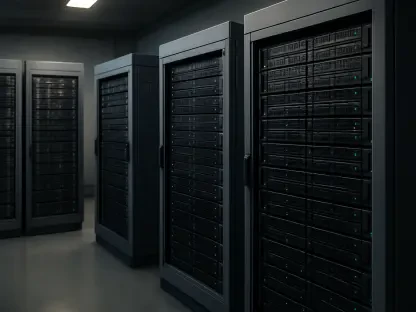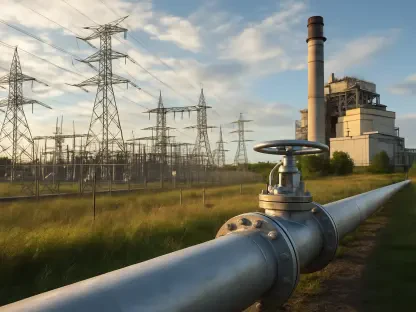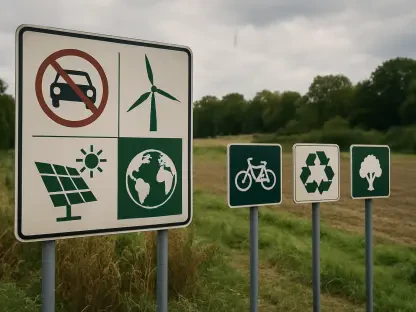Allow me to introduce Christopher Hailstone, a seasoned expert in energy management and utilities with a deep background in renewable energy and electricity delivery systems. With years of experience navigating the complexities of grid reliability and security, Christopher offers unparalleled insights into the evolving landscape of power generation and infrastructure. Today, we dive into a conversation about the Tennessee Valley Authority’s (TVA) strategic focus on hydropower upgrades, nuclear investments, and grid modernization amid record-breaking demand growth. Our discussion explores how TVA balances diverse energy sources, tackles challenges from data centers and industrial expansion, and plans for a sustainable and reliable future.
How is TVA prioritizing hydropower upgrades in response to the current energy landscape?
TVA is placing a significant emphasis on hydropower right now because it’s a critical piece of the puzzle in managing escalating electricity demand. With 29 hydro stations in their portfolio, these assets provide a unique ability to respond quickly to fluctuations in load, which is increasingly important as demand patterns become more unpredictable. The focus is on modernizing these facilities to ensure they remain reliable and efficient, especially as a stabilizing force for the grid. Hydropower’s role as a dispatchable resource makes it indispensable while other capacity, like gas and nuclear, is still being developed.
What specific challenges in electricity demand are pushing this reinvestment in hydro systems?
The primary challenge is the sheer scale and speed of load growth. TVA set new peak records in 2025, with demand hitting over 35,000 megawatts in winter and more than 32,000 in summer. This surge is driven by a mix of factors like population migration into the region, industrial expansion, and the boom in digital infrastructure—think data centers that need massive, consistent power. These rapid load swings create a need for flexible resources like hydro to step in and balance the system when demand spikes or drops unexpectedly.
Can you elaborate on the types of upgrades planned for TVA’s hydropower facilities?
The upgrades are comprehensive, targeting both performance and longevity. TVA is looking at refurbishing turbines and generators to boost efficiency and availability, especially during high-water events or seasonal peaks. There’s also a push to modernize control systems, which will improve how these stations respond to real-time grid needs. Beyond that, dam safety work is a priority to meet flood-control obligations and ensure long-term reliability. These improvements are about making sure the hydro fleet can handle both current demands and future challenges.
How does hydropower contribute to grid stability during extreme weather or sudden load changes?
Hydropower is a game-changer for grid stability because it can ramp up or down almost instantly. During extreme weather—say, a brutal winter storm or a heatwave—hydro stations can quickly adjust output to match demand spikes. The same goes for rapid load changes, like when a data center comes online or industrial operations scale up suddenly. Unlike some other sources, hydro doesn’t need hours to start generating; it’s a fast-responding backbone that keeps the grid from faltering under pressure.
With TVA setting new peak demand records in 2025, what’s driving this unprecedented growth?
The growth is multifaceted. A big chunk comes from migration into TVA’s seven-state territory, bringing more residential and commercial users. Then there’s the rise of advanced manufacturing, which demands substantial power for operations. But the real standout driver is digital infrastructure—data centers in particular. These facilities are power-hungry and often need service on tight timelines, pushing demand to record levels like the 35,430 megawatts seen in January 2025. It’s a perfect storm of societal and technological shifts.
How does TVA balance hydropower with other energy sources like gas and nuclear in its overall strategy?
TVA sees hydropower as the flexible anchor in its energy mix. While gas and nuclear provide baseload and longer-term capacity, hydro offers the agility to handle short-term fluctuations. Gas, with over 3,700 megawatts under construction, is a key player for meeting sustained demand growth in the near term. Nuclear, on the other hand, is more about long-term stability and clean energy goals. The balance comes from using each source for its strengths—hydro for responsiveness, gas for immediate capacity, and nuclear for a sustainable future.
Can you share details about TVA’s nuclear investments and their significance?
TVA is making substantial investments in its nuclear fleet, with major upgrades already completed at plants like Watts Bar, Sequoyah, and Browns Ferry. These improvements focus on enhancing safety, efficiency, and output to ensure the plants remain viable for decades. Additionally, there’s exciting progress at the Clinch River site, where TVA is pursuing a construction permit for small modular reactors. This project is under review by the Nuclear Regulatory Commission, with a timeline extending into late 2026 or early 2027. It’s a forward-looking move to integrate innovative, scalable nuclear tech into the mix.
With data centers placing immense pressure on the grid, how is TVA managing this unique demand?
Data centers are indeed a massive challenge due to their high energy needs and rapid deployment schedules. TVA is working directly with developers to mitigate peak load impacts, sometimes encouraging onsite generation or participation in demand response programs to offset their draw on the grid. The goal is to maintain reliability for all customers while ensuring fair rates. It’s a delicate balance—accommodating these hyperscale facilities without compromising service or affordability for the broader community.
What can you tell us about TVA’s investments in transmission and system operations to support this growth?
TVA is pouring resources into grid infrastructure to keep pace with demand. A standout project is the new $330 million system operations center, set to come online in 2026. This facility will enhance grid management by providing better real-time monitoring and decision-making capabilities, which are crucial as load patterns grow more complex. Alongside this, there are ongoing transmission investments across the region to strengthen connectivity and reliability. These efforts are about building a smarter, more resilient grid for the future.
Looking ahead, what is your forecast for the role of hydropower in meeting energy demands over the next decade?
I believe hydropower will remain a cornerstone of energy systems like TVA’s over the next decade, especially as demand variability continues to grow with data centers and electrification trends. Its ability to provide quick, clean power during peak times or emergencies is unmatched, even as gas and nuclear capacity expand. With ongoing modernization, I expect hydro to become even more efficient and integrated with smart grid technologies, ensuring it plays a pivotal role in balancing reliability and sustainability. The challenge will be maintaining these aging assets while adapting to new pressures, but I’m optimistic about its enduring value.









